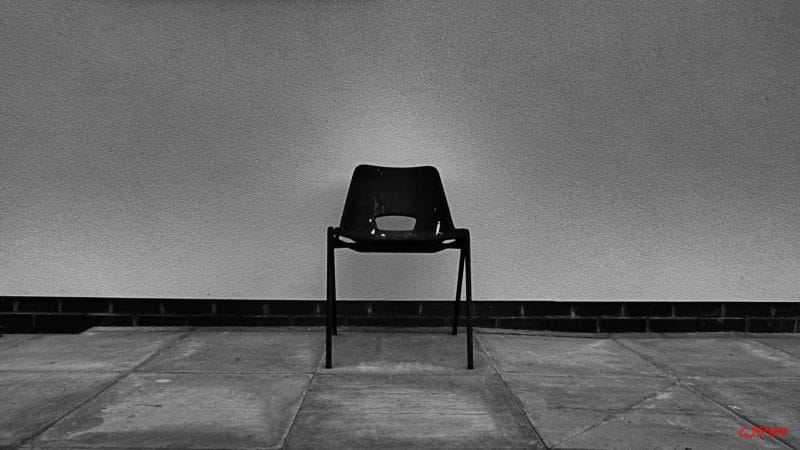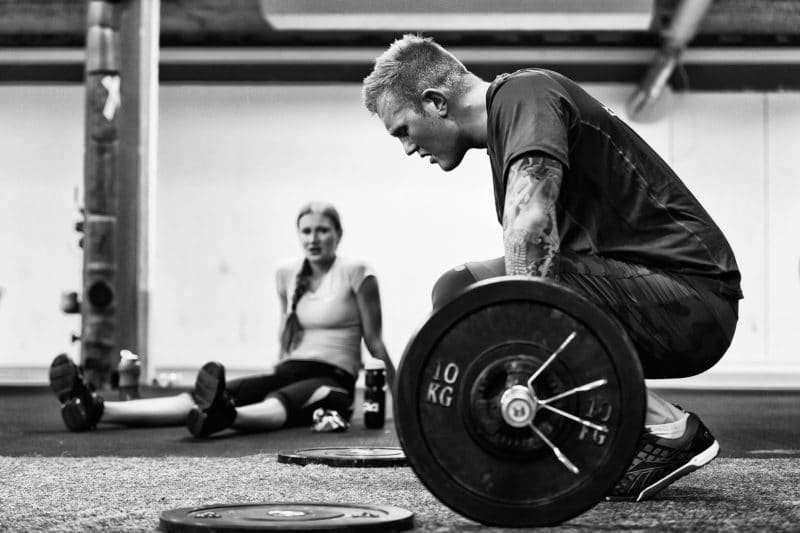One of the hardest parts about trying to get back in shape is deciding which workout regimen to adopt. With so many different fitness programs, philosophies and bits of exercise advice cluttering the market these days, finding an effective plan that you’ll actually stick to can be quite a feat.
I want to cut through all of that noise by sharing a powerful, yet controversial bit of advice that will speed up your fat loss, no matter what approach you take. Best of all, it’s probably something you’re doing to some degree already.
Serious Exercise Advice: Stop Sitting So Much
This is easily one of my most surprising fitness tips. Before I dive into this amazing technique, I want to ask you: how much time do you spend sitting every day?
It’s probably more than you think, and unfortunately, it’s not doing your health any favors.
A 2008 study at Vanderbilt University surveyed 6300 people and found that the average person spends 55% of their waking hours seated. That’s quite a bit of time, and if you ask me, I think the average person spends quite a bit more time than that sitting down.
Another study performed by the American Cancer Society has found that men and women who sit more than six hours a day are 48% and 94%, respectively, likelier to die sooner than their counterparts who sit less than three hours a day.
That’s right: as bizarre as it sounds, spending most of your day sitting down is slowly killing you.
[Related: The Surprising Dangers of Sitting (and 5 Simple Solutions)]
If you have a regular exercise regimen, even a very frequent one—say, 30 minutes every day— you may think that none of this applies to you; unfortunately, that’s just not the case.
According to the Vanderbilt study, even half an hour of daily exercise did not counteract the effect of sitting for seven or eight hours a day.
These are frightening numbers when you consider that this describes most everyone with a 9-to-5 job. What’s worse, the moderate exercise we’re constantly told to partake in isn’t us helping us in this department either. What can we do?
The Other Extreme
To avoid the effects of our sedentary culture, and also to whip themselves into shape quickly, some people will take exercise advice from one of their friends and take on one of those super-intense video workout programs that are so popular today. Alternately, others will subject themselves to punishing 90-minute workouts at the gym.
Both of these approaches will produce effects, but I must admit, I’m not a fan.
Why, you ask?
It’s because these programs are not sustainable. The average person simply cannot maintain this degree of intensity for an extended period of time. I see it all the time with clients: many people seek my help after they’ve rebounded into unexpected weight gain following a moderate degree of success on one of those programs.
If by chance you stick with this supercharged approach, it will wear you down.
I saw this firsthand during my time as a professional soccer player and through my friendships with various other pro athletes. Why do you think most athletes retire by the age of 35? It’s because they can’t put themselves through the physical punishment any longer; it simply destroys the body. Over time, it can even kill you.
In part, this is caused by the oxidative stress that occurs with excess exercise—it causes a lot of damage at the cellular level.
In previous posts, here and here, I’ve discussed how an unhealthy diet can trigger an overactive immune response which in turn leads to weight gain. It may surprise you, but this can happen with overtraining as well—this overzealous pursuit of leanness can actually backfire and lead to increased immune, inflammation, and cortisol responses. This disastrous chain of events can ultimately favor deposition of fat in your belly region.
[Related: 19 Anti-Inflammatory Foods You Should Eat Each Week]
It’s the last thing you’d ever expect would happen, but it actually does.
What you need is an approach to weight loss that’s going to become a part of your lifestyle, not some get-fit-or-die-trying plan. Thankfully, there’s something you’re already doing every day that—if you do just a little bit more of it—can counteract all of this.
The Magic of Micromovements
At this point, you might be puzzled as to what the solution could be. After all, I’ve explained that moderate exercise isn’t effective in reducing your likelihood of earlier mortality, and excess exercise is downright unhealthy. What’s this amazing exercise advice I have for you?
Allow me to introduce you to micromovements.
We place so much emphasis on the importance of exercise, but what I want to tell you is that committed workouts should not be your main form of exercise.
You simply need to move more, and that might be as simple as taking the stairs more, making it a point to get up from your desk and walk around more often, or simply taking every opportunity that presents itself to put your body in motion. These overlooked movements are what I like to call micromovements, and they can literally save your life.
I’m certain that several people will read this and condemn it as utter hogwash, especially if they see results from their gym time.
However, think about this: when you hit your 60s, will you be able to hit the gym with the same degree of frequency and intensity as you did when you were younger? You most certainly will not, and micromovements will be of tremendous use to you then. I want to suggest that they can be of tremendous use to you now.
By performing micromovements on a consistent basis throughout the day, you keep your muscles engaged and your blood pumping. What you won’t ever notice is how much all of this accumulates to help you stay trim.
This is partially why the standing desk has become such an in-demand item for successful people in the business world. By standing at your computer rather than sitting, you’re keeping your muscles constantly engaged to stabilize your body as you make slight shifts in your stance. It also improves your posture.
Finally, you’re also keeping your heart from getting “lazy,” which happens when you sit down too much. The distance your heart has to pump blood from the floor to your heart is greatly diminished if you’re sitting, but as soon as you stand at full height you become lengthier, meaning your heart has to pump that much harder to get blood from the floor to your head. That alone is a game changer.
This exercise advice may seem excessive, and even strange, but this simple concept is very effective in fighting off flab. I use a standing desk in my office, and I absolutely love it.
All these little micromovements add up. You won’t see or feel results overnight, but if you do this for a couple months and it becomes a part of your lifestyle, it makes a huge difference.
There are other ways you can get your micromovements done. Walking every single day is one of the easiest methods, and as such, you should be walking a minimum of 30 minutes every day.
This basic method of human transportation is like oxygen—you simply need it, so don’t deprive yourself of it. To jumpstart your day, you can also do 10 bodyweight squats or push-ups when you wake up in the morning.
[Related: 10 Habits of Successful People (Done Before 9 a.m.)]
You should also consider taking on some fun method of exploring micromovement training—maybe playing frisbee with your dog or playing hopscotch with your kids. All of these non-exercise forms of activity have a gradual but cumulative impact on your fitness.
Timing is important too. Exercise primes your muscles to take in nutrients, which is why your biggest meal of the day should come after your most active point of the day. With this in mind, you might try a few micromovements before you sit down to every meal. Little things like this can make a big difference over time.
All Movement Matters
Mind you, I’m not arguing against exercise.
It’s still important that you engage in a committed exercise practice that pushes your cardiovascular system to the limit, but you only need to do this in small doses three or four times a week. Anything more than that is excessive, and will burn your body out. Instead of adding more gym time to your schedule, make micromovements a regular part of your day.
We have to remember that gym culture is a recent development in human history; it’s really only a reaction to our increasingly mechanized society which favors convenience over physical human effort. We collectively worship the gym to counteract the ever-increasing amount of time we spend in our cubicles or in front of our computers.
Again, I’m very aware that this exercise advice will be controversial to many people, but it’s something I wholeheartedly believe in. I’ve not only seen the effects of it in my own life, but also in the lives of thousands of my clients.
Enjoy This Article?
If you’re curious to know more about micromovements, then grab a copy of my upcoming book The All-Day Fat-Burning Diet.
In it, I share a great deal of life-changing exercise advice and include a number of really cool workouts that will help you utilize these concepts to train smarter, not harder, the end result being that you’ll burn fat and keep it off for good. Isn’t that what you really want?








